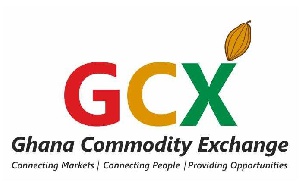 GCE us expected to expected to kick start full operation in November
GCE us expected to expected to kick start full operation in November
The Ghana Commodity Exchange (GCX) in the second phase of piloting of trading operations is expected to trade 130 metric tonnes of maize – both grades one and two – this Thursday in Accra, an official has revealed.
In an interview with Goldstreet Business, the Business Development Manager, Stephen Debra said in five months’ time, the exchange is looking forward to add soya and some other commodities.
Other key agriculture and non-agriculture commodities will be introduced as the exchange develops.
The maiden trading operation took place in Kumasi on April 24.
GCX is expected to kick start full operation in November, this year, despite the plans to operationalize the project by 2016.
The Government’s drive to support smallholder farmers, increase value along the agricultural value chain and provide export opportunities for Ghanaian commodities, has led to its investment in GCX, in its bid to structure the commodities market towards the eventual commencement of regular formal trading.
Explaining the essence of the piloting, Debra noted that, this is geared towards building capacity, testing of the market, and ensure a much better understanding what the concept is all about.
The piloting phase is largely to demonstrate the structured trading concept which includes; commodity quality testing, grading, weighing, packaging and standardization, as well as preparing farmers and other market actors for the planned electronic trading and electronic warehouse receipts (e-WR) later this year.
In the first piloting, GCX brought together sellers and buyers of maize from all parts of the country to participate in its first auction trade which took place in Kumasi. 126 farmers were involved and several amongst them sold GHS 136,000 of trade during two trading sessions, using a Reserve Auction trading mechanism.
Buyers of maize had the opportunity to purchase high quality maize (GCX grade 1), whilst sellers (mostly small holder farmers) received premium prices and benefiting from access to a wider market for their goods.
Both parties benefited from low transaction costs, as the model presents a sustainable alternative to low prices and margins.